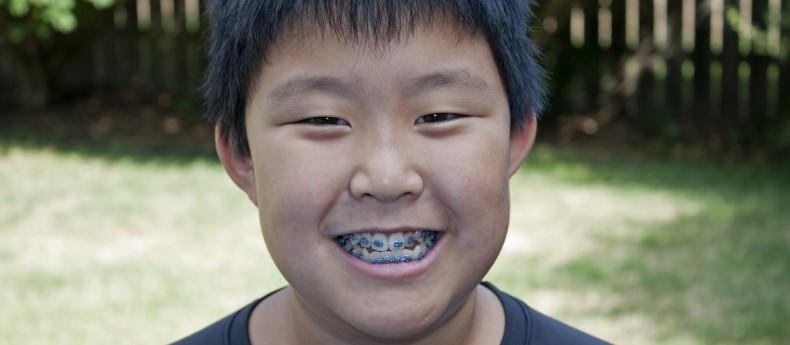
When Should Children Get Braces?
When it comes to braces, parents often face a perplexing question: “When is the best time for my child get braces?” Well, the answer is … it depends!
Early Evaluation and Treatment
While we can improve smiles at any age, the early detection of orthodontic problems achieves maximum effectiveness with a minimum amount of time and expense. The advantage is that some problems may be easier to correct if they are found and treated early. Waiting until all adult teeth have come in, or until facial growth is nearly complete, may make correction of some problems more difficult.
Most orthodontists agree that the best time to be seen for an initial visit is at age seven. By this time, the back molars have grown in, establishing the bite. The orthodontist can evaluate the bite and look for orthodontic problems in the front-to-back and side-to-side tooth relationships. This does not mean that treatment needs to be started this early, but we can give you an idea about how your child’s mouth is developing and what the long-term treatment sequence might be.
Early treatment (or phase one) occurs usually between the ages of six and eleven. Treatment focuses on correcting early problems and providing a good environment for the growth of the lower and upper jaws, and the eruption of adult teeth.
The most commonly treated early problems are:
- Early or late loss of baby teeth
- Under bite
- Anterior open bite caused by thumb sucking
- Jaws that are too far forward or backward
- Narrow upper jaw
- Biting the cheek or the roof of the mouth
- Facial imbalance
Orthodontists are trained to spot subtle problems with jaw growth and emerging teeth while some baby teeth are still present. Early treatment allows the orthodontist to guide the growth of the jaw and incoming adult teeth. This proactive care can also regulate the width of the upper and lower dental arches, gain space for adult teeth, avoid the need for adult tooth extractions, reduce the likelihood of impacted adult teeth, correct thumb-sucking, and eliminate abnormal swallowing or speech problems. In other words, early treatment can simplify later dental care.
If early orthodontic treatment is not indicated, we will carefully monitor jaw growth and tooth development to advise on the best time to initiate orthodontic treatment.
Treatment for Adolescents
The most common time for braces is between eleven and fifteen years. By age eleven or twelve, most kids have a full set of adult teeth and are therefore ready to begin comprehensive orthodontic treatment. Because crooked teeth and bad bites rarely correct on their own, getting started with braces and using the individuals’ remaining adolescent growth period seems to work best for most children.
The Best Time to Start Treatment
The timing of orthodontic treatment is very important to achieving an ideal result. As each child is different it is therefore recommended that you take your child to an orthodontist for a pre-treatment evaluation.
The pre-treatment evaluation will include a medical/dental history, a clinical examination, plaster study models of teeth, photos of the face and teeth, and X-rays of the mouth and head. A proper customized treatment plan, completed according to this evaluation, can yield shorter treatment time, better result, and greater post-treatment stability.
Our goal is to give every child a truly beautiful, healthy smile, which can be achieved as easily as possible, and that will last a lifetime.
Copyright United Family Healthcare 2014 All right reserved - 京卫网审[2014]第1927号 - 京ICP备13017554号-4





